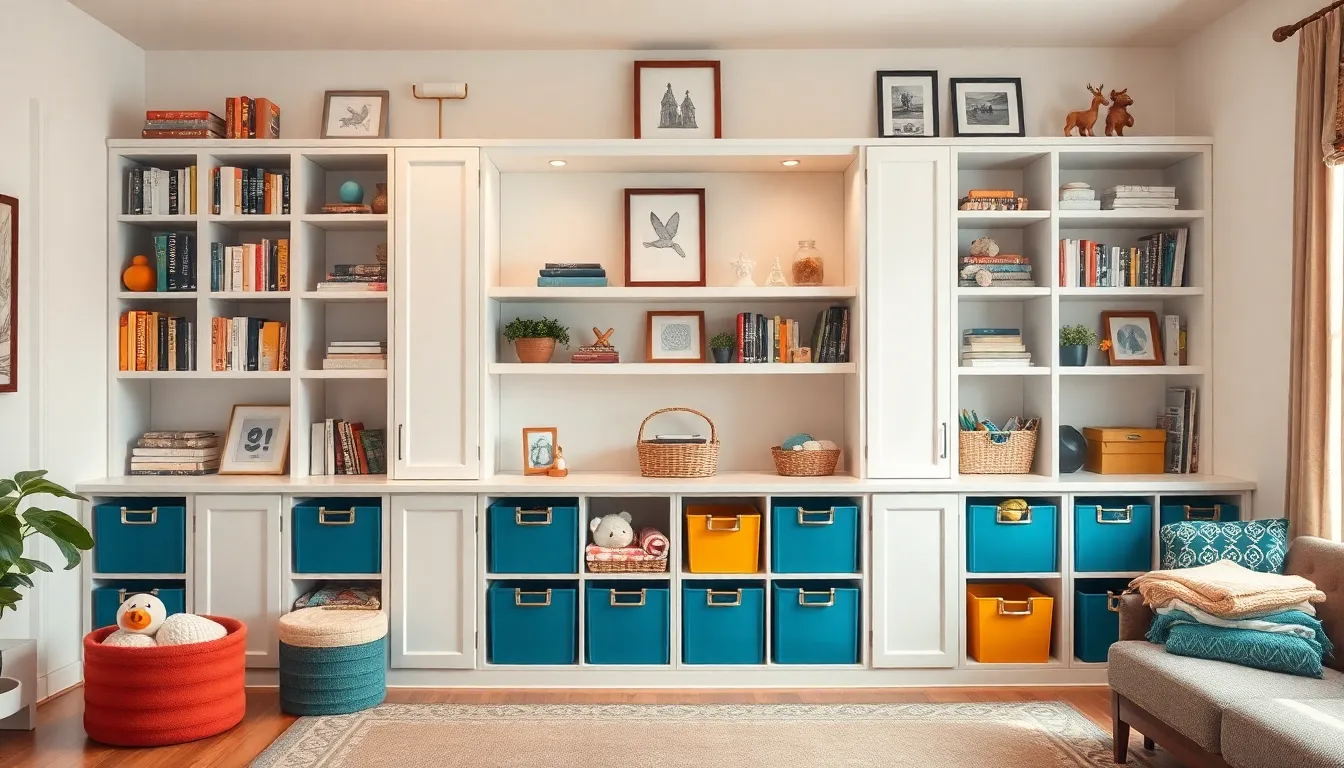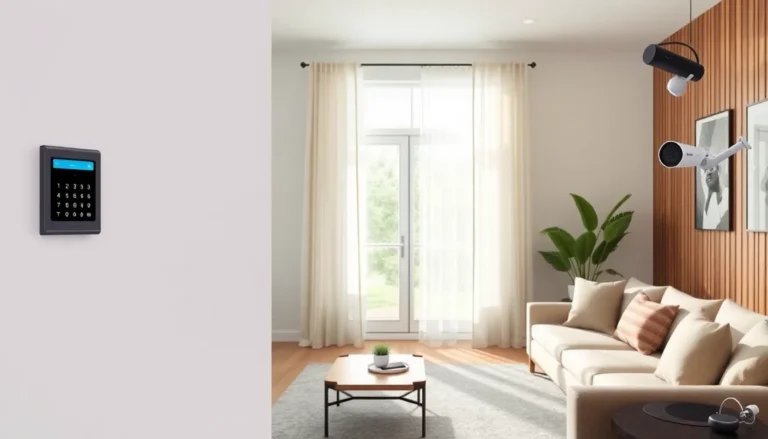The family room often becomes a chaotic battlefield of toys, snacks, and the occasional lost sock. It’s where family bonding happens, but it can also feel like a scene from a reality show called “Hoarders: Family Edition.” If the thought of organizing this space makes you want to hide under a pile of throw pillows, fear not.
Table of Contents
ToggleAssessing Your Family Room Needs
Assessing needs within a family room involves understanding how the space will best serve family members. Families can create an inviting environment by identifying activities that occur regularly in this room.
Identifying Key Activities
Identify typical activities that happen in the family room. Watching movies, playing games, and reading often rank as primary functions. Consider how many family members participate in these activities and the types of games or movies enjoyed. Prioritize storage solutions for frequently used items to keep the space functional.
Evaluating Space and Layout
Evaluate the available space in the family room. Measure dimensions to understand how furniture fits within the area. Analyze foot traffic and ensure pathways remain clear. Arrange seating to foster conversation while allowing easy access to entertainment options. Implement multifunctional furniture to maximize usability and maintain a streamlined environment.
Effective Storage Solutions

Effective storage solutions transform cluttered family rooms into organized spaces. Utilizing available options makes every inch of the room functional.
Utilizing Cabinets and Shelves
Cabinets offer ample storage for board games, books, and electronics. Shelves, positioned at eye level, create a display area for family photos and decorative items. Sliding doors on cabinets prevent dust accumulation and keep items hidden. Open shelving fosters a sense of space while offering easy access to frequently used items. Adjustable shelves accommodate various sizes, making organization effortless. Labeling shelves and cabinets simplifies finding items quickly.
Baskets and Bins for Clutter Control
Baskets and bins easily contain toys, blankets, and miscellaneous items. Opting for storage that blends with the room’s décor enhances the overall aesthetic. Color-coded bins streamline sorting, making clean-up fun for kids. Large baskets work well for oversized items, while smaller bins suit smaller spaces. Rotating baskets seasonally can keep the room fresh and fun. Grouping similar items helps maintain organization, so finding things becomes a breeze.
Furniture Arrangement Tips
Arranging furniture effectively enhances the family room’s functionality. Careful consideration of layout can promote comfort and accessibility.
Feng Shui for Family Rooms
Feng Shui principles suggest positioning furniture to create a harmonious space. Face seating toward the center to encourage conversation and connection. Avoid blocking doors or pathways, as this disrupts energy flow. Balance elements by including plants or art to add vitality. Use soft lighting to foster a warm atmosphere. Incorporating these ideas makes the family room inviting for gatherings.
Creating Functional Zones
Functional zones optimize space for various activities. Dedicate specific areas for watching TV, playing games, or reading. Group furniture to define each zone, such as placing a coffee table between sofas. Add rugs to differentiate spaces visually. Storage solutions should be nearby, ensuring easy access to frequently used items. By organizing these zones, families maintain a smooth flow and enhance usability.
Personalizing Your Family Room
Personalizing the family room enhances comfort and reflects individual tastes. Families can create a warm, inviting atmosphere by incorporating personal touches.
Adding Family Photos and Artwork
Family photos showcase cherished memories and strengthen connections. A curated wall display fills empty spaces with love and personality. Framed pictures of special occasions or candid moments can serve as conversation starters. Artwork adds another layer of emotion. Selecting colorful pieces can energize the space, while calming images foster tranquility. Mix and match different sizes and styles to create visual interest. Consider incorporating children’s artwork to celebrate creativity and highlight unique family moments.
Choosing Coordinating Colors and Textiles
Coordinating colors and textiles promotes a cohesive look. Begin by selecting a color palette that resonates with family members. Neutral tones paired with vibrant accents can brighten the family room. Soft textiles, like throw pillows and blankets, enhance comfort and warmth. Choose fabrics that are durable and easy to maintain, considering the room’s frequent use. Mixing textures, such as linen, cotton, and velvet, creates depth and a welcoming feel. Area rugs can unify the space while adding color and pattern. Tailor these elements to reflect personal style, ensuring a family room that feels inviting and uniquely theirs.
Maintaining an Organized Family Room
Maintaining an organized family room requires intentional strategies and participation from everyone. Establishing routines simplifies this process by providing structure and reducing clutter.
Establishing Routines and Rules
Setting specific times for tidying up creates consistency. Establish rules for item placement, designating locations for toys, books, and games. Families benefit from regular clean-up sessions after activities. Try implementing a quick ten-minute pick-up rule before leaving the room. This small habit encourages everyone to participate, making it easier to keep the space tidy over time.
Involving the Whole Family
Involvement from all family members fosters collective responsibility. Assign each person specific tasks that contribute to organization. Encouraging kids to help sort items into labeled bins builds accountability. Organizing game nights where everyone participates in arranging games can make the process enjoyable. Celebrating small victories when the space looks great reinforces positive behaviors. With this involvement, the family room remains an inviting gathering place for everyone.
An organized family room can significantly enhance the overall atmosphere of a home. By implementing effective storage solutions and thoughtful furniture arrangements, families can create a space that promotes connection and relaxation. Personal touches like family photos and curated displays not only add character but also strengthen bonds.
Consistency in maintaining this space is key. Establishing routines and involving everyone in the tidying process fosters a sense of ownership and accountability. With these strategies in place, families can enjoy a welcoming environment that reflects their unique style while serving as a functional hub for cherished moments together.



